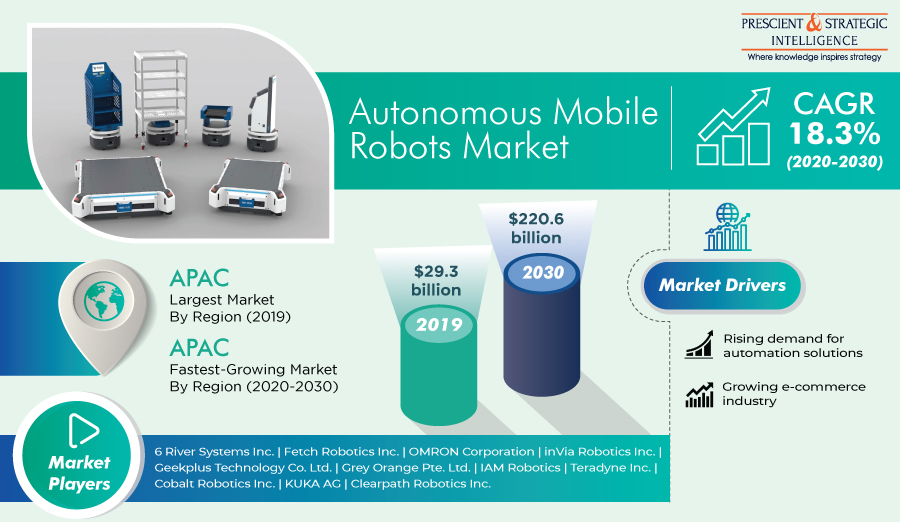At present, the needs of end users are met by Fetch Robotics Inc., Omron Corporation, Clearpath Robotics Inc., KUKA AG, and Teradyne Inc. Currently, these companies are engaging in partnerships and product launches to meet the needs of the aforementioned end-use industries. For example, in January 2019, Fetch Robotics Inc. entered into a partnership with Ryder System Inc. to handle material and collect data of workflow operations in the U.S. With this partnership, the former will provide AMR solutions to serve the customers and employees of warehouses of the latter to improve its logistics and supply chain.
According to P&S Intelligence, Asia-Pacific (APAC) dominated the autonomous mobile robots market in the recent past. This was on account of the expansion of the e-commerce industry and the extensive need for a streamlined supply chain in the region. These robots are being increasingly deployed in warehouses, especially in China, South Korea, and Japan, to simplify product delivery and storage processes.

The growth of the e-commerce sector in the region can be chiefly credited to the growing internet penetration and numerous advantages being offered by online platforms. Additionally, the European region also adopted a notable volume of autonomous mobile robots in the preceding years. Among European nations, Germany registered the highest sales of such robotic systems due to the high social and economic stability of the country.
The World Bank states that the gross domestic product (GDP) of Germany grew from $3.682 trillion in 2017 to $3.975 trillion in 2018. Moreover, the presence of a strong e-commerce sector also encourages the adoption of autonomous mobile robots in the country. Thus, the flourishing e-commerce industry and surging adoption of autonomous solutions in the manufacturing sector are expected to facilitate the demand for autonomous mobile robots in the years to come.
This market research report provides a comprehensive overview of the market
- The Future potential of the market through its forecast for the period 2020– 2030
- Major factors driving the market and their impact during the short, medium, and long terms
- Market restraints and their impact during the short, medium, and long terms
- Recent trends and evolving opportunities for the market participants
- Historical and the present size of the market segments and understand their comparative future potential
- Potential of on-demand logistics services, so the market players make informed decisions on the sales of their offerings